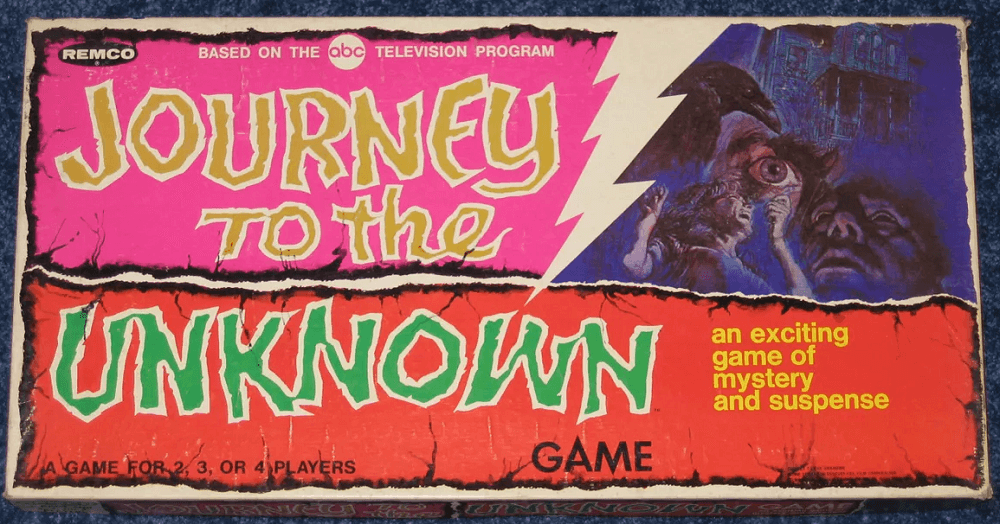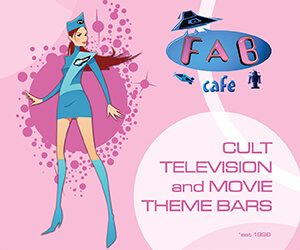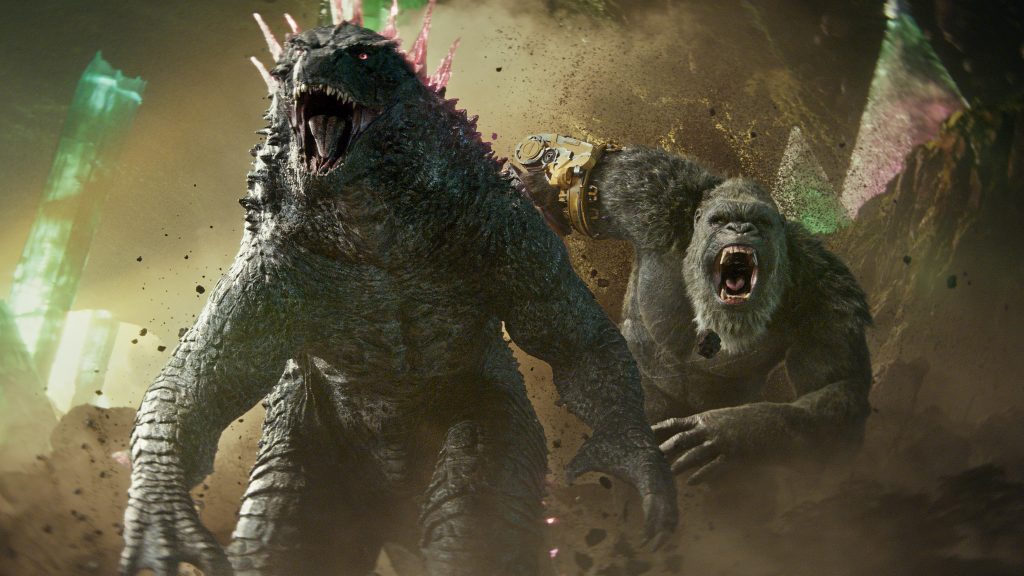Ah, telephemera… those shows whose stay with us was tantalisingly brief, snatched away before their time, and sometimes with good cause. They hit the schedules alongside established shows, hoping for a long run, but it’s not always to be, and for every Street Hawk there’s two Manimals. But here at STARBURST we celebrate their existence and mourn their departure, drilling down into the new season’s entertainment with equal opportunities square eyes… these are The Telephemera Years!
1968-69
To twenty-first century eyes, the off-the-wall humour of Rowan and Martin may seem an acquired taste but the TV viewers of 1968 couldn’t get enough of their Laugh-In on NBC, outrating every other show on the list. Underneath, the final season of Gomer Pyle presented more of the incompetent side of the US military, which must have been a comfort to mothers of those poor unfortunates being drafted to fight in Vietnam, but there was succour to be found in warm blanket shows like Bonanza and Andy Griffith spin-off, Mayberry RFD, and Lucille Ball returned with a brand new show, Here’s Lucy.
Genre fans were well-catered for, even with The Avengers, I Spy, The Saint, and Star Trek all entering their final seasons, with Mission Impossible, Bewitched, and new hit The Mod Squad all doing well for ABC, while I Dream of Jeannie was a top thirty show for the peacock network, where Columbo made its bow. Other new shows of interest to those of a more fantastic bent were Irwin Allen’s Land of the Giants and spies meet cowboys actioner The Wild Wild West, but what of those shows that didn’t make an impact on the 1968 Nielsen ratings? This is the story of four more failures…
The Outcasts (ABC): US television in the 1950s and 1960s was full of cowboy shows, a possible reaction to their emergence from a cocoon of isolation on the world stage, their imperial expansion writ large in echoes of their “manifest destiny.” As different as these shows were from each other – wagon trails, bounty hunters, frontiersmen, and more featured across dozens of series – they all had one thing in common: everyone in them was white.
The Outcasts, then, is a history-making show, because it starred Otis Young as one of the titular twin leads and Otis was black. The Outcasts was the story of two men, both ex-soldiers in the American Civil War, where they’d fought on different sides. Don Murray’s Earl Corey was a former slave owner, Young’s Jemal David a former slave, and the two made for very reluctant partners, with Corey retaining much of the attitudes that had led him to fight on the wrong side and David understandably not wanting to trust him. They were useful to each other, but a grudging respect developed, as Corey assisted David in tracking down bounties, working for a man he once held powerful sway over.

For all its progressive approach, critics were scathing of the show, of its levels of violence and its misguided attempt to portray black people as they really are, missing its mark by a mile and still having David give uncomfortable levels of deference to a man ostensibly working for him, and it was often the white Corey who saved the day for the pair.
Put opposite Rowan and Martin’s Laugh-In and Mayberry RFD, and premiering a few months after the deaths of Martin Luther King Jr and Robert Kennedy, The Outcasts stood little chance but still ran for an astonishing twenty-six weekly episodes before the plug was finally pulled. Almost entirely forgotten now, the show has never been released on home video but there are a few episodes up on YouTube if you want to see just how wide of the mark their noble intentions carried them.
My Friend Tony (NBC): Over on NBC, another odd couple emerged in the shape of Italian émigré Tony Novello – you know, from the title – and uptight professor of criminology John Woodruff. The pair, who had met in Italy during World War II when Tony was a boy pickpocket and Woodruff one of his victims, reunited as a detective duo, with Novello doing the legwork for Woodruff to pore over in his office.
Woodruff was played by James Whitmore, a veteran actor who had just one prior starring role to his name – 1960’s The Law and Mr Jones – and had just completed filming as one of the head of the Simian Assembly in Planet of the Apes. Opposite him was Enzo Cerusico, a star of Italian cinema who had quite a following amongst Italian-American teenage girls, despite (or maybe because of?) his broken English and rugged good looks. Cerusico had been discovered by producer Sheldon Leonard, who cast him in a Rome-set episode of I Spy and developed the show – created by future Charlie’s Angels creators Ivan Goff and Ben Roberts – especially for him.

The show followed the highly rated Bonanza in the schedules but failed to keep hold of its audience, with Leonard critical of such a late timeslot, arguing that Cerusico’s young fans were in bed by the time it aired. Regardless, it played badly with critics, who found it uninspiring, “hackneyed and confusing.”
A mid-season replacement in January 1969, My Friend Tony limped on to June, when the last of its sixteen episodes aired, although re-runs took it through to the start of the 1969-70 season. As you’d expect, there is no DVD release and there is precious little on YouTube, save for a few clips and the show’s title sequence.
Journey to the Unknown (ABC): Produced in association with ITV in the UK, who aired the show in 1969, Journey to the Unknown was a science fiction, fantasy, and horror anthology series, similar in tone to The Twilight Zone, that aired on ABC on Thursday nights in Fall 1968.
The show was a co-production between Hammer Film Productions and 20th Century Fox Television, featuring both British and American actors, with such familiar faces as Barbara Bel Geddes, Patty Duke, George Maharis, and Vera Miles, alongside future UK TV staples like Jane Asher, Nanette Newman, and Dennis Waterman. Scripts were often adapted from short stories by the likes of Robert Bloch, Ray Bradbury, and Richard Matheson, filmed in the UK by a number of top genre directors.

The stories were a mixed bunch, with particular highlights being Waterman falling in love with a mannequin in the season opener, Newman investigating a set of telepathically connected quadruplets, and David Hedison as a news reporter who realises that the same five people are always present at the sight of tragic accidents. Several of the episodes were cut together as feature length productions, hosted by Sebastian Cabot, Joan Crawford, and Patrick McGoohan, aired as part of ABC’s various weekly movie showcases.
Thirteen episodes aired through to January 1969, when the show made its final journey to the unknown. This is less a result of poor ratings performance and more a pattern set by similar anthology shows, who often presented just a single season before a different brand was used for almost identical presentations, the lustre of the new always preferable to familiar old friends. A tie-in board game was produced by Remco but there has never been a home release, despite a clamouring for all of Hammer’s TV and film output to be made available.
The Outsider (NBC): The Outsider wasn’t Darren McGavin’s first spell as a TV detective – 1950’s Casey, Crime Photographer and seventy-eight episodes of Mickey Spillane’s Mike Hammer meant he had considerable experience as a sleuth. It wasn’t even the role he’d become best known to genre fans for, with his quirky turn as Carl Kolchak, a proto-Fox Mulder, in Kolchak: The Night Stalker ensuring he is fondly remembered by readers of this fine publication.
The Outsider was a return to regular roles for McGavin, however, after years of guest appearances and a few turns in Hollywood, and his David Ross – a man who spent six years in prison for a murder he did not commit before being pardoned – was an exercise in growing into a character that became exasperated by his treatment by the police (many of whom still regarded him as guilty) and the eccentricities of his La-La-Land clientele.

Created by Roy Huggins, who had trod similar ground with The Fugitive five years before, The Outsider presented an unusual hero, one with money troubles and undiagnosed depression. Jack Lord had turned down the show to do Hawaii Five-O and it’s hard to imagine anyone other than McGavin inhabiting the role, although James Garner would later give it a good go when Huggins retooled the concept into The Rockford Files in 1974.
Continuing a theme with this week’s shows, there’s no DVD release but there are some episodes on YouTube. The show did earn a contemporaneous tie-in novel, written by hardboiled crime author Jim Thompson, one of a number of TV adaptations he wrote towards the end of his career, but this is long out of print.
Next on The Telephemera Years: What if the USA were a fascist state?
Check out our other Telephemera articles:
The Telephemera Years: 1966 (part 1, 2, 3, 4)
The Telephemera Years: 1968 (part 1, 2, 3, 4)
The Telephemera Years: 1969 (part 1, 2, 3, 4)
The Telephemera Years: 1971 (part 1, 2, 3, 4)
The Telephemera Years: 1973 (part 1, 2, 3, 4)
The Telephemera Years: 1975 (part 1, 2, 3, 4)
The Telephemera Years: 1977 (part 1, 2, 3, 4)
The Telephemera Years: 1980 (part 1, 2, 3, 4)
The Telephemera Years: 1982 (part 1, 2, 3, 4)
The Telephemera Years: 1984 (part 1, 2, 3, 4)
The Telephemera Years: 1986 (part 1, 2, 3, 4)
The Telephemera Years: 1987 (part 1, 2, 3, 4)
The Telephemera Years: 1990 (part 1, 2, 3, 4)
The Telephemera Years: 1992 (part 1, 2, 3, 4)
The Telephemera Years: 1995 (part 1, 2, 3, 4)
The Telephemera Years: 1997 (part 1, 2, 3, 4)
The Telephemera Years: 2000 (part 1, 2, 3, 4)
The Telephemera Years: 2003 (part 1, 2, 3, 4)
The Telephemera Years: 2005 (part 1, 2, 3, 4)
The Telephemera Years: 2008 (part 1, 2, 3, 4)
Titans of Telephemera: Irwin Allen
Titans of Telephemera: Stephen J Cannell (part 1, 2, 3, 4)
Titans of Telephemera: Hanna-Barbera (part 1, 2, 3, 4, 5)
Titans of Telephemera: Kenneth Johnson
Titans of Telephemera: Glen A Larson (part 1, 2, 3, 4)
Titans of Telephemera: Quinn Martin (part 1, 2)








